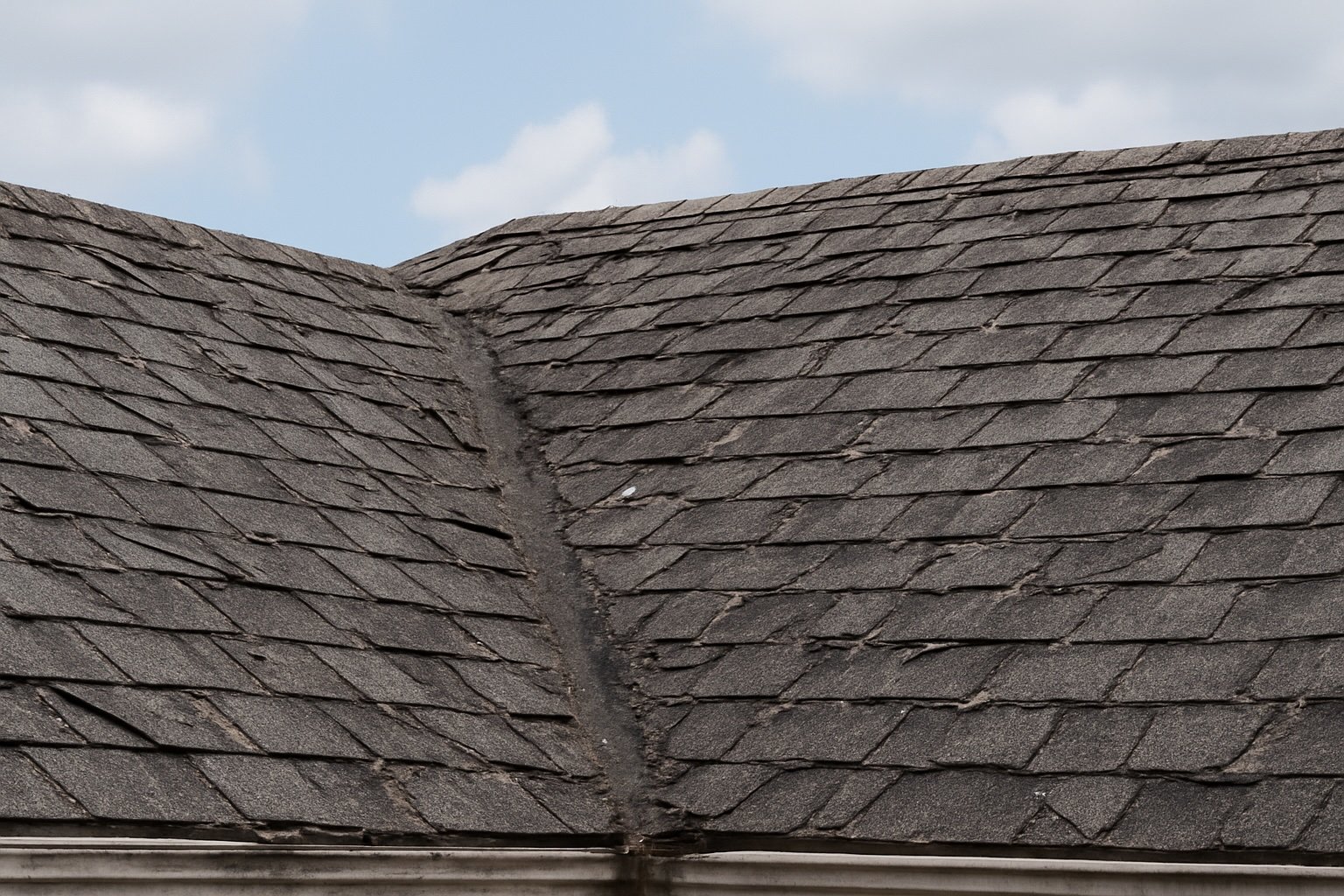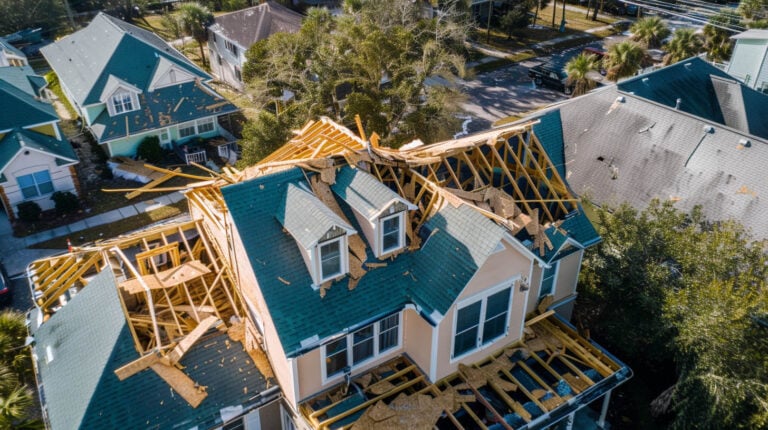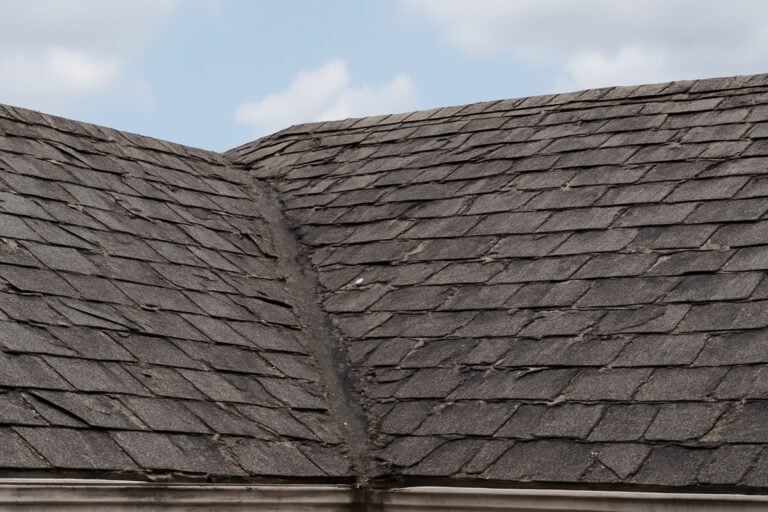When you work with Steadfast Roofing in Riverview, FL, we help homeowners make informed decisions about re-roofing their homes—so they avoid premature replacements or costly repairs. In this guide, we delve into industry-grade signs, cost calculations, material considerations, and strategic timing to ensure your roof stays reliable, efficient, and high-performing.
Key Indicators: When Your Roof Needs Replacement
1. Advanced Age & Manufacturer Lifespan
Every roofing material comes with a rated lifespan. Asphalt shingles often last 20–25 years; premium architectural shingles may reach 30 or more. Once your roof approaches or surpasses that age, its protective ability diminishes significantly.
2. Excessive Granule Loss & Bald Spots
When you find granules from your shingles in gutters, downspouts, or at roof transitions, it indicates that your shingles are degrading and losing their protective coating. Bald or thin patches accelerate water damage and ultraviolet breakdown.
3. Cracked, Curling, or Missing Shingles
Shingles lifting at the edges, curling up, cracking, or going missing are red flags. These failures compromise your roof’s weather barrier and open pathways for leaks—even in mild storms.
4. Sagging Roof Deck or Visible Deformation
Visible sagging or dips in the roofline may mean structural damage below the surface. This indicates moisture infiltration, rot, or weakened decking and warrants immediate replacement rather than repair.
5. Recurring Leak Repair History
Frequent patch repairs in multiple areas suggest the roof as a whole has lost integrity. It often becomes more economical to re-roof than to continue repairing older, failing roofing systems.
6. Daylight Through the Attic
If you can see daytime light from inside the attic through the roof boards, it means gaps or breaches in the roofing substrate. Over time, these small gaps lead to leaks, insulation damage, and mold growth.
7. Poor Ventilation or Mold & Mildew Growth
High humidity or moisture in the attic, mold growth on rafters, or rotten sheathing are signs that ventilation or waterproofing has failed. Such issues often accompany roofs nearing the end of their service life.
Cost & Value: Re-Roofing Investment Breakdown
Material & Labor Costs
Roof replacement costs vary widely by materials (asphalt, metal, tile, slate), roof pitch, complexity (dormers, penetrations, valleys), and labor rates in your region.
Removal vs. Overlay
Removing old roofing layers down to the deck is best practice. You must inspect and repair the decking beneath before applying new roofing. Overlaying existing layers may hide damage and shorten the new roof’s lifespan.
Long-Term ROI & Energy Efficiency
A new roof with proper insulation, reflective shingles, or cool-roof coatings can lower heating and cooling costs. Over a decade, energy savings and reduced repair needs deliver a strong ROI.
Financing & Insurance Options
Many local roofing companies offer financing, payment plans, or work with insurance claims. Knowing your options helps homeowners move forward without undue financial strain.
Choosing Materials That Withstand Florida Conditions
High Wind & Impact Resistance
Select materials rated for hurricane-force winds (150+ mph), with strong fastening systems and underlayment. This ensures your roof survives intense storms.
Reflective & Cool Roof Technologies
White or light-colored shingles, reflective coatings, or cool-roof materials bounce solar radiation, reducing attic temperatures and HVAC demand.
Durable Substrates & Long-Term Warranties
Concrete tiles, metal panels, and slate are long-lasting materials that resist UV, thermal expansion, and weathering. Choose those with workmanship and material warranties.
System Compatibility
A roof is a system of components: underlayment, flashing, ventilation, and waterproofing. For long-term performance, every layer must work in harmony.
Strategic Timing: When to Schedule Your Re-Roof
- Preemptive Replacement: Don’t wait for signs of catastrophic failure. Replace when age or warning signs appear.
- Dry Season: Schedule during periods with lower rainfall to minimize weather-related delays.
- Avoid Peak Demand: Off-peak seasons may yield better pricing and contractor availability.
- Coordinate Solar or HVAC Upgrades: If you plan to install solar panels or upgrade insulation, schedule your roof work accordingly to avoid redundant costs.
The Re-Roof Process: What Homeowners Should Expect
- Comprehensive Inspection & Evaluation – We inspect decking, flashing, structural integrity, ventilation, and leak history.
- Detailed Proposal & Material Selection – Homeowners receive material options, cost breakdowns, warranties, and schedules.
- Permitting & Code Compliance – We manage all local permits and ensure adherence to building codes for wind, drainage, and structural support.
- Full Tear-Off & Deck Repair – Old layers are removed; decking is repaired or replaced as needed.
- Installation of Underlayment, Flashing & Shingles – High-performance underlayment, proper flashing, and precise shingle installation.
- Ventilation & Ridge System Integration – Balanced intake and exhaust ventilation maintain attic conditions.
- Final Inspection & Cleanup – We perform quality checks, conduct magnet sweep debris removal, provide a client walk-through, and complete documentation.
Post-Roofing Maintenance & Monitoring
- Biannual Inspections: Check flashing, gutters, sealants, and shingles after storms.
- Prompt Tile or Shingle Replacement: Replace broken pieces immediately to prevent interior damage.
- Clean Gutters & Remove Debris: Prevent water backup and shingle damage.
- Monitor Attic Conditions: Watch for humidity, mold, or heat spikes.
- Maintain Records & Warranty Details: Keep detailed records for insurance, resale, and maintenance tracking.
Our Commitment to Homeowners
Steadfast Roofing delivers complete transparency, engineering rigor, and tailored proposals. We help homeowners decide when to re-roof, which materials to choose, and how to maximize return on investment across years of performance.
Book your free roof inspection today and make a confident, strategic move toward a roof that protects, endures, and performs.
Read one of our latest blogs: “Recognizing and Repairing Roof Valley Damage: A Complete Homeowner’s Guide”.




